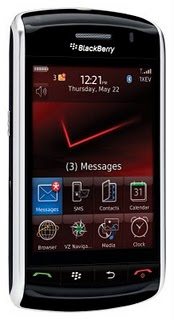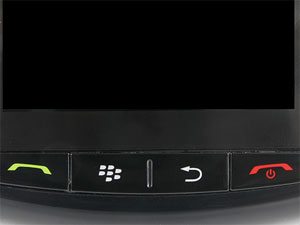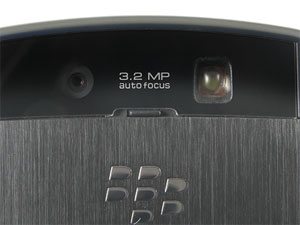 It was June 29, 2007. The day I put down my Blackberry Pearl and started my new life with the iPhone.
It was June 29, 2007. The day I put down my Blackberry Pearl and started my new life with the iPhone.
It wasn’t easy at first. The Pearl must have been my sixth or seventh model of the Research In Motion (RIM) device. My first Blackberry was heavy, had a black-and-white screen, a clickable track wheel on the side. It was great. Wherever I went my email followed me. I lost count of the number of times I emailed contacts from the golf course, er, my office.
They got smaller, lighter and thinner over the years. Full color screens came along. A phone was added so I didn’t have to carry two devices on my belt, though the Batman look did impress a few people. Gone went the track wheel in favor of a way cool track ball. What could be better?
The iPhone, for one. When the Apple device hit the market that fateful Friday in June, I was the first in line to get one (seriously, I had the first one that was sold in Houston). It was and continues to be a game changer in the world of smartphones. No keyboard, a gorgeous screen, accelerometer for automatic portrait-landscape viewing, real web pages. And, originally, an email service that “just OK” with no corporate server support.
The iPhone grew up this summer when the 3G version came out. More memory, supposedly faster wireless connection and those very cool third-party applications. Corporations started buying them as the new device finally worked with their servers. But still the email service was “just OK” – not immediate, a bit jerky and, thanks to the AT&T 3G network , sometimes slow to download.
It wasn’t Blackberry email.
So while users continue to put the iPhone at the top of Mount Gadget, many neglect to include the all-important service issues, especially email usability, reliability and simplicity. I am a mobile guy and rely heavily on smartphones and I have tried most all of them. But I keep coming back to the Blackberry since email is the most important application to me.
I recently got my hands on the newest RIM family member, the Blackberry Storm, and it seems to feature the best of both worlds. The Certs of gadgets, if you will. It’s two…two devices in one. The best wireless email delivery system in the world and a full-color, touchscreen that takes commands via a few swipes of your finger.
Yes, the Storm has taken some cues from the iPhone like other recent smartphones. If imitation is the sincerest form of flattery then Apple should be blushing red (note: if flattery = lawsuits then Apple will be seeing red).
The form factor is similar to the iPhone but I will try not to compare the two gadgets going forward as you probably know what the iPhone can do. While the Storm does have a touchscreen it also has four hard keys on the front. I find these buttons a quick way to power the device on and off, make a phone call, see the main menu and return to the previous screen.
 No physical keyboard means typing letters and digits on a virtual keyboard; one that rotates from portrait to landscape modes as you turn the device. As you type a character, the 3.25″ LCD screen is pressed down to assimilate the feeling of touching an actual key. RIM calls this technology SurePress. It took a few tries until I got used to the feeling but this feedback feels solid and provides assurance that a character was actually input.
No physical keyboard means typing letters and digits on a virtual keyboard; one that rotates from portrait to landscape modes as you turn the device. As you type a character, the 3.25″ LCD screen is pressed down to assimilate the feeling of touching an actual key. RIM calls this technology SurePress. It took a few tries until I got used to the feeling but this feedback feels solid and provides assurance that a character was actually input.
When used in landscape (wide) mode a virtual QWERTY keyboard appears. As of now I favor this method as the Storm fit perfectly between my hands while my thumbs do the touching. Portrait (upright) mode finds a SureType predictive keyboard, not unlike the two-characters per button on the smaller, thinner Blackberry Pearl. This method works better for me when I want to bang out a quick email or SMS with one thumb.
The glass display is brilliant, showing 65,000 colors at a crisp 480×360-pixel resolution. You can adjust the backlighting, font size and type. This is a good point to mention the multimedia capabilities. Movies and video clips on the Storm will blow you away.
The Blackberry Storm’s multimedia player can play various music and video formats, including MP3, WMA, AAC, MIDI music files, MPEG-4, WMV, and H.263 video clips. There’s a search function, playlist creation, shuffle and repeat, and you get a full-screen mode for video playback. The included software CD also contains a copy of Roxio Easy Media Creator, so you can create MP3s from CDs and add audio tags.
Sound has been an issue with other smartphones as speakers tend to be small and low powered. The Storm has just one speaker in the back but believe me, it can crank. The microphone also picks up noise well from both the front and back of the device. Oh, did I not mention it takes full-motion video complete with a zoom feature?
Most every cell phone and smartphone has a built-in camera which makes it convenient to email your contacts some funny faces or your current location (check this out dude, I’m at the bar!). That’s all good but these cameras have generally been grainy due to a low resolution sensor, usually 2 megapixels. The Storm is equipped with a 3.2 megapixel camera with a flash, auto focus, 2x zoom and image stabilization. With the built-in GPS you can even geotag photos.
 Onto the GPS features. The wireless radios in the Storm are an integrated and assisted GPS, meaning it will use both satellites and cellular triangulation to get a fix on your position. You can use the Storm as a handheld navigator and if you subscribe to Verizon’s VZ Navigator location-based service, you can get real-time turn-by-turn directions, traffic data and more.
Onto the GPS features. The wireless radios in the Storm are an integrated and assisted GPS, meaning it will use both satellites and cellular triangulation to get a fix on your position. You can use the Storm as a handheld navigator and if you subscribe to Verizon’s VZ Navigator location-based service, you can get real-time turn-by-turn directions, traffic data and more.
Browsing the web has become commonplace on smartphones and surfing the Internet on the Blackberry Storm looks great thanks to the bright VGA screen. It has a full HTML browser that uses Internet Explorer or Firefox, your choice. You can navigate with your finger via pan mode or cursor mode. To select a hyperlink, just highlight the link and then click. And yes kids, there is support for streaming media, including YouTube’s mobile site
The Storm also features the new BlackBerry Application Center where you can download more programs and utilities to your device. The full store is anticipated to launch next Spring but there are eight applications currently available, including Facebook, Flickr, and several IM clients.
The specs on the battery life seem impressive though I have yet to deplete my initial charge. It comes with a replaceable lithium ion battery (I repeat, REPLACEABLE) with a rated talk time of 5.5 hours and up to 15 days of standby time.
The Blackberry Storm is offered exclusively with Verizon Wireless service. The package includes a solid set of accessories, including a travel charger with various adapters, a USB cable, an 8GB microSD card, a SIM card, a wired headset, a software CD, and reference material.
And finally, the price. Verizon Wireless set the price at $199.99 with a $50 main-in rebate with a new two-year service agreement.
So what goes around, comes around. After almost a year and a half of a Blackberry-less life I am once again sending and receiving emails like a fiend on the new Storm. I suspect Crackberry addicts all over the world will clamor for the gadget and show off their new appendage with pride. But with all new technology products there comes a dilemma.
What do I do with my iPhone?
